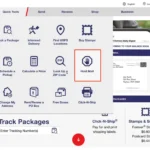
The number of ransomware attacks on businesses is increasing every year. Companies of all sizes are susceptible to these cyber crimes because they don’t take proper protection measures. Once the attack occurs, and the data is exposed, businesses face significant financial and reputational consequences.
The main cause of successful ransomware attacks on organizations is existing vulnerabilities. Cybercriminals exploit these vulnerabilities to demand more money, ruin the company’s reputation, and capitalize on stolen data.
Two main aspects of protection against these attacks are ransomware recovery and prevention. Understanding how they work can help you protect your business.
What is a ransomware attack?
A ransomware attack is a type of cybercrime where malicious software, or ransomware, infiltrates a computer system and encrypts sensitive data. Attackers demand payment, often in cryptocurrency, to restore access. If you don’t pay the ransom, the criminal keeps the data locked, leaks it to the public (or worse, competitors), or both.
Statistics show that the most common way that ransomware attacks spread is through existing vulnerabilities. They can enter your system via:
- Phishing emails: Attackers use deceptive emails to trick employees into clicking on malicious links or downloading infected attachments.
- Exploiting security flaws: Outdated software and unpatched systems provide easy entry points for ransomware.
- Compromised websites: Visiting infected websites or downloading unauthorized software can introduce ransomware into a system.
Small and medium-sized businesses are just as much at risk as larger enterprises. While the most common targets are critical infrastructure and state institutions, smaller financial companies and healthcare providers are also appealing to cyber criminals.
Evolution of ransomware attacks
Ransomware has evolved dramatically over the years, becoming more sophisticated and harder to combat.
Early ransomware
In its earliest form, ransomware involved basic encryption and unsophisticated attack vectors. Attackers used to target individuals rather than companies mostly because they didn’t have the tools to go further.
Modern ransomware:
Today’s ransomware leverages advanced encryption techniques and targets high-value organizations. Attackers often employ “double extortion,” where they demand a ransom not only for decryption but also to prevent sensitive data from being leaked online.
Ransomware-as-a-Service (RaaS):
A more recent development, RaaS allows even novice cybercriminals to launch attacks using ransomware tools provided by experienced developers. This “business model” makes ransomware attacks more accessible and prevalent.
Ransomware prevention: Key steps
Preventing a ransomware attack requires a proactive and multi-layered cybersecurity strategy. Here are the essential steps:
Regular software updates and patching
Keep all software and systems up to date. Cybercriminals often exploit known vulnerabilities in outdated systems. Implement automated patching tools to minimize delays.
Employee education
Train employees to recognize phishing emails, avoid suspicious downloads, and follow safe browsing practices. Awareness is the first line of defense against ransomware.
Endpoint security solutions
Deploy antivirus software, firewalls, and intrusion detection systems. These tools can help identify and block ransomware before it infiltrates your network.
Data backup strategies
Create regular backups of critical data and store them offline or in secure cloud environments. This ensures you can recover your data without paying a ransom.
An important part of the data backup strategy should be the creation of immutable backups. This data, which cannot be altered or deleted (even by system admins), adds an extra layer of protection. It allows you to recover your data in full without paying a ransom.
Access control and privilege management
Restrict access to sensitive data to only those employees who need it. Use multi-factor authentication (MFA) to add an extra layer of security.
Network segmentation
Divide your network into isolated segments to limit the spread of ransomware if an attack occurs. This can prevent a single infection from crippling the entire organization.
Ransomware detection
Although not strictly preventive, ransomware detection plays a major role in minimizing the impact of an attack. Early detection mechanisms, such as monitoring for unusual file encryption activity or unauthorized access attempts, allow stopping ransomware in its tracks.
Ransomware detection is part of the multi-layered cybersecurity strategy that also includes using ransomware recovery software.
Ransomware recovery: Main points
If your organization falls victim to a ransomware attack, you need to take quick action. The faster you can react to the problem, the more likely you are to limit the impact of the attack.
Isolate the infection
Immediately disconnect infected systems from the network to prevent further spread. Avoid shutting down the systems entirely, as this could erase forensic evidence.
Assess the scope of the attack
Work with your IT team or a cybersecurity expert to determine which systems and data have been affected. Identifying the ransomware variant can help in recovery efforts.
Notify relevant parties
Inform stakeholders, including employees, clients, and partners, as appropriate. In many cases, ransomware attacks must also be reported to regulatory authorities.
Restore from backups
If you have reliable backups, restore the affected systems and data. Ensure the ransomware is completely removed before restoring to avoid reinfection.
Evaluate paying the ransom
While paying the ransom may seem like a quick fix, it should be a last resort. Paying does not guarantee the return of your data and may encourage further attacks.
Pros and cons of Recoverware
Off-the-shelf recoverware tools and services can assist businesses in recovering from ransomware attacks. Here are some benefits and challenges to consider:
Pros:
- Quick Recovery: Designed to restore systems and data quickly, minimizing downtime.
- Cost-Effective: More affordable than paying a ransom or purchasing custom recoverware.
- Legal Compliance: Helps businesses meet regulatory requirements for data recovery.
Cons:
- Limited Effectiveness: May not work against highly sophisticated ransomware variants.
- Dependency Risk: Relying solely on recoverware without preventative measures can leave businesses vulnerable.
- False Sense of Security: Recoverware isn’t a substitute for comprehensive cybersecurity practices.
High-quality custom ransomware recovery solutions can be the difference between a lost reputation and a quick recovery without downtime. However, finding the one that suits your business perfectly while fitting the budget can be tricky.
Keeping your data safe the smart way
Ransomware attacks pose a significant threat to businesses of all sizes, but understanding how these attacks work and implementing effective prevention and recovery measures can safeguard your organization.
The best defense against ransomware is a proactive one. By prioritizing both prevention and cybersecurity measures and data protection with effective cyber recovery solutions, businesses can protect sensitive data, maintain trust with customers, and avoid the costly consequences of cyber attacks.







